In many ways, Haute Couture Fashion Week in Paris feels like a bubble full of embroidery, feathers and acres of tulle ruffles, a showcase of incredible handmade designs that could sell well north of $100,000.
However, at the Autumn-Winter 2019 shows, though the focus remained very much on offering escapism through exquisite fabrics and elaborate craftsmanship, some couturiers also provided touches of realism. At a time when consumers are increasingly conscious of the impact the fashion industry has on the environment, many couturiers are keen to highlight how craftsmanship can elevate upcycling to new heights.
Sustainable futures
Over the past several months, luxury ready-to-wear labels and high street brands alike have announced changes to their business practices in the name of sustainability. And now it seems that the push for sustainability has seeped into the world of haute couture.
Dutch designer Ronald van der Kemp, who has long been a champion for sustainable fashion, said that 98% of his new collection was made using repurposed fabrics and materials, including overstock from past collections and factory waste.
He also made a statement against faux fur, which is usually made from petroleum-based materials, by presenting a “fur” coat and a leopard-print stole made from silk tubes stuffed with recycled down. (Elsewhere, Jean Paul Gaultier offered a similarly clever alternative to faux fur, presenting coats with trompe l’oeil prints of animal pelts.)
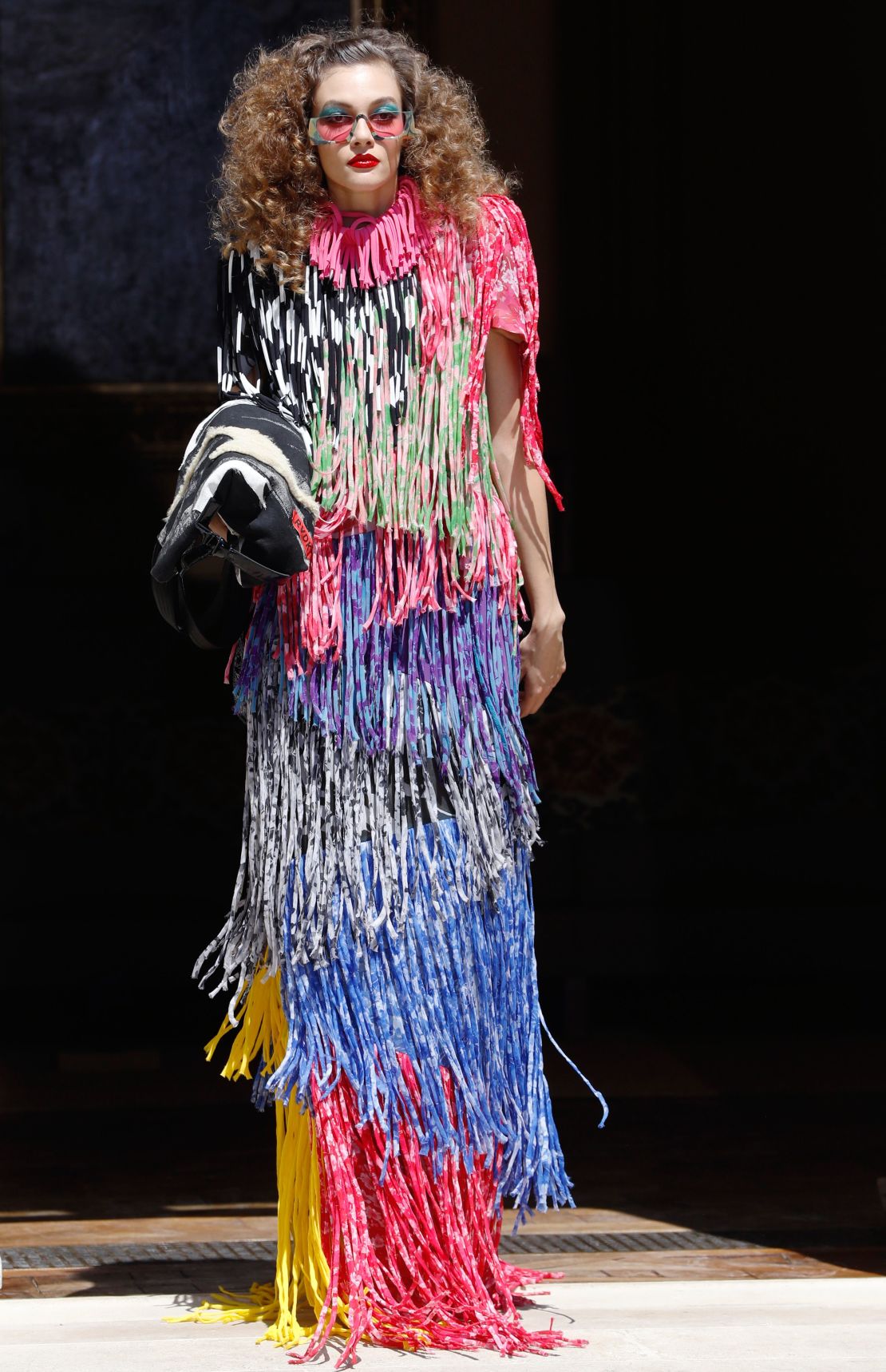
“Couture in its heyday set the tone in fashion. With my sustainable couture I want to inspire girls out there to experiment with their wardrobes and with vintage clothes; to teach them to enhance their personalities and be conscious about buying clothes,” van der Kemp said.
“I also want to show the world that it’s possible to make couture with existing materials, dead stock, high-end leftovers, vintage fabrics, and that sustainability can be glamorous, sexy and high-fashion.”
Driving home that message, Viktor & Rolf created colorful patchwork dresses from vintage garments. They also collaborated with Dutch artist and textile designer Claudy Jongstra on a series of coats made from the wool of Drenthe Heath sheep she raises and shears herself. The designers told WWD they aimed “to cast a positive spell that says things can be done.”
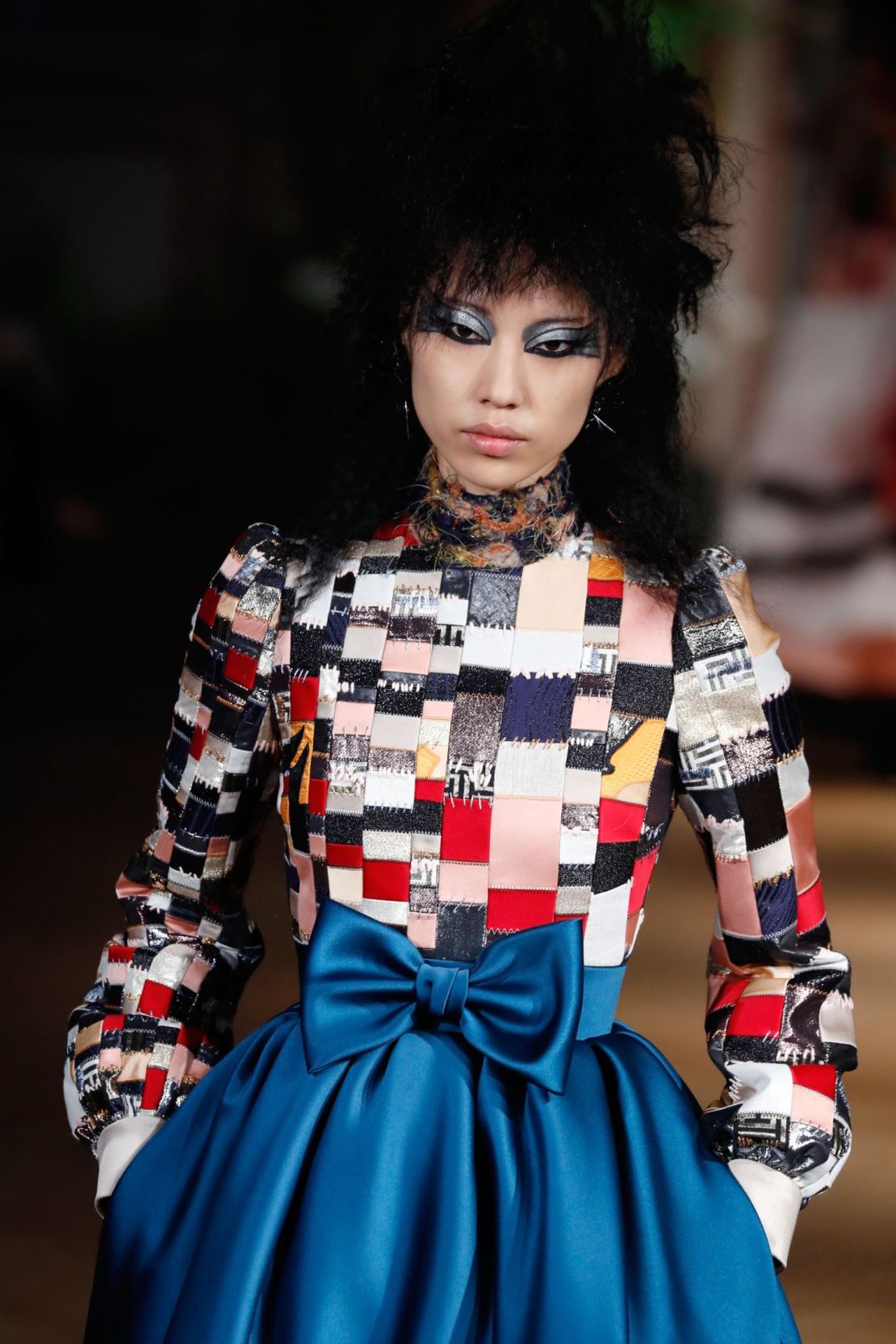
Meanwhile, on the fringe of couture, Philipp Schueller and Rens de Waal, the Dutch duo behind the label Schueller de Waal, staged an eco-minded alternative to the traditional fashion show. Instead of renting a venue, they had models, dressed in upcycled garments, pick up litter in front of the town hall in the 15th arrondissement as part of a “cleaning action” organized in partnership with two local NGOs.
New beginnings
Chanel is always one of the hottest tickets in town and this season was not different. The industry had been eagerly waiting to see the house’s first couture collection under newly crowned creative director Virginie Viard, who took charge following the death of Karl Lagerfeld in February.
Chanel’s presentations, staged at the Grand Palais, have always been associated with the grandest of grand sets – a space shuttle, a replica of the Eiffel tower, a Mediterranean villa complete with palm trees and giant pool – so this season’s two-story circular library seemed a little tame by comparison, but it was a fitting tribute to Lagerfeld’s and founder Gabrielle “Coco” Chanel’s irrepressible love of books.
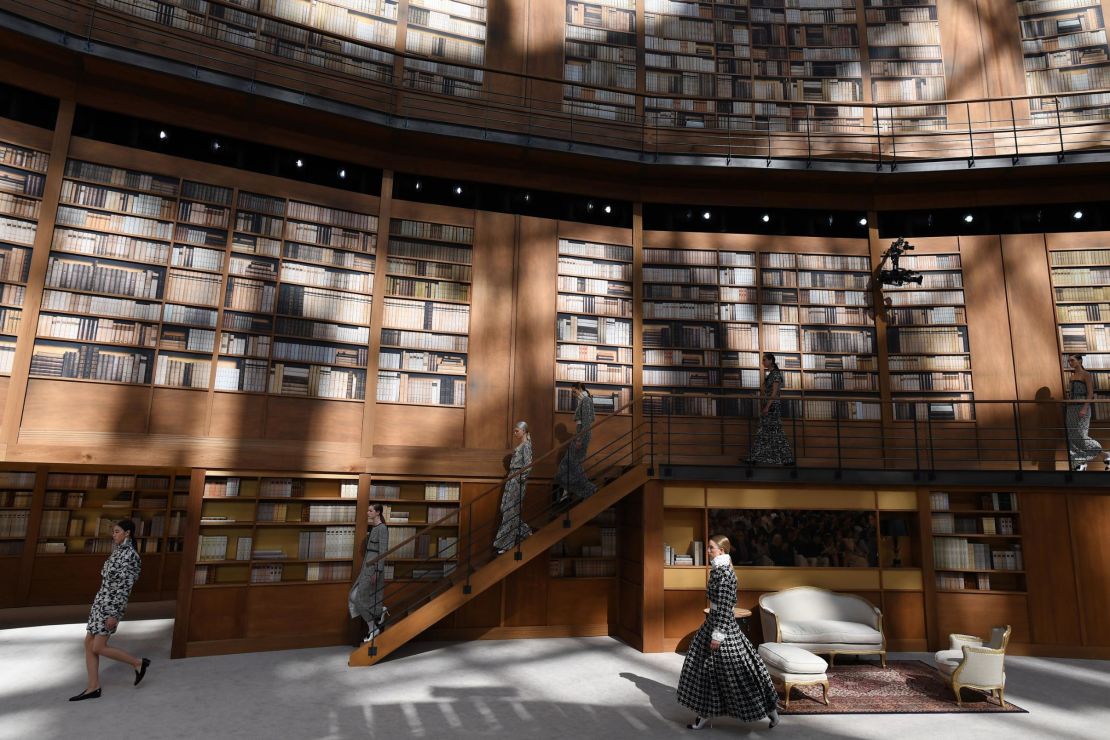
With this show, the longtime collaborator of the great designer confirmed the maison was in good hands, sending out a polished collection with her vision of the Chanel allure: Slender and elongated silhouettes walking hands deep into pockets and wearing comfortable flats, even with an evening gown.
“I dreamt about a woman with nonchalant elegance and a fluid and free silhouette; everything I like about the Chanel allure,” Viard said in a press release.
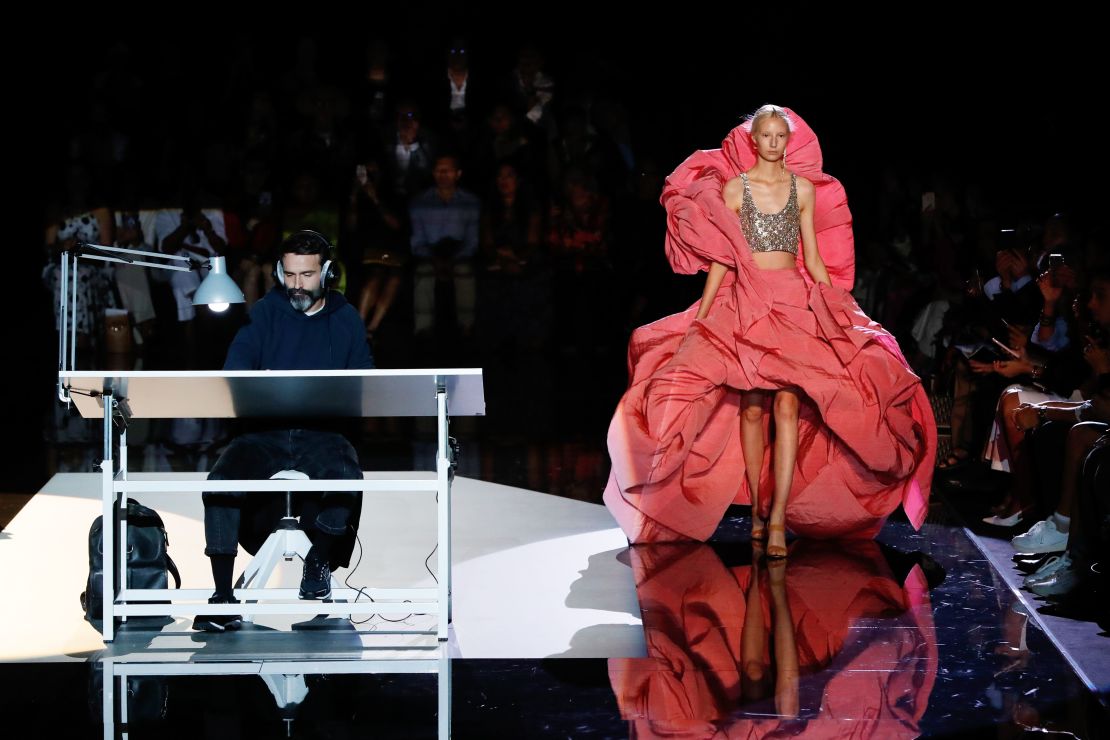
In another debut, Texan designer Daniel Roseberry unveiled his first couture collection for Schiaparelli, having taken over from Bertrand Guyon in April. Unlike his predecessors, the 33-year-old didn’t delve into the archive of Elsa Schiaparelli, deciding that her signature shocking pink was no longer shocking, but still brought a dash of surrealism to his collection, with oversized, cloud-like silhouettes and dreamy accessories.
Couture goes tech
Lace, tulle and beading remain the hallmarks of haute couture, but some designers are pushing their use of materials in new directions.
As always, Dutch designer Iris Van Herpen is leading the way. This season she collaborated with kinetic sculptor Anthony Howe on the finale “Infinity” dress, a skeleton of aluminum and stainless steel with a delicate layer of feathers that seemed to fly around the model at its center.
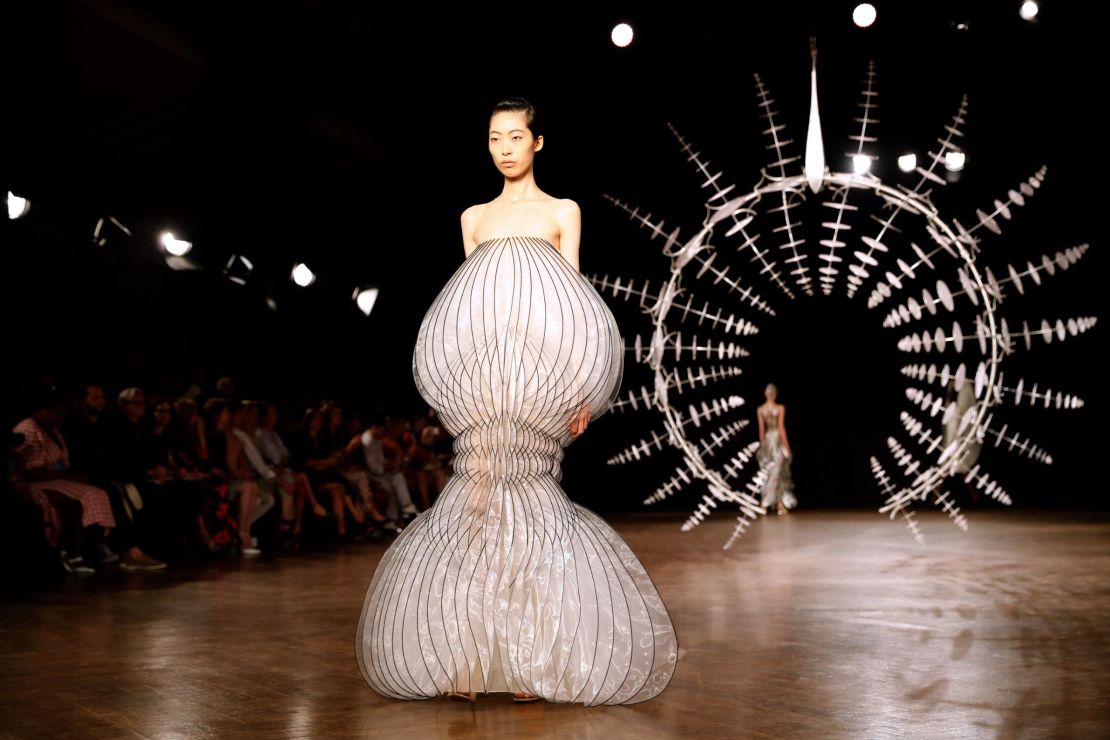
In a press release, the designer explained her overall collection reflected “the beauty and complexity of our environment, exploring the patterns and structures within its fragile landscape.” And in sending models through and around Howe’s portal-like sculptures in layers of organza that moved fluidly around their bodies, she offered one of the most memorable (and Instagrammable) moments of the week.
Elsewhere, Lebanese designer Tony Ward presented a dress from material that had been entirely 3D-printed using tulle and 33 pieces of biodegradable TPU (an eco-friendly plastic that decomposes in soil within five years). Ward said the dress was completely recyclable. “Even though couture is all about the ‘fairy hands,’ I had the curiosity to integrate this technique and mix it with our know-how,” Ward said in an email.

































